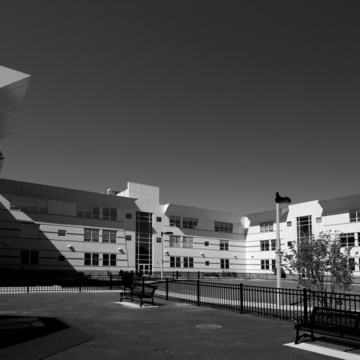The architects have created a highly visible image on busy, heavily trafficked streets at the junction of the South End and Roxbury. No design could be farther from the idea of the generic little—or big—red brick schoolhouse, typical of Boston and beyond. Like a theater marquee, the vertical red frame tower serves as a beacon for the horizontal L-shaped facades extending outward, while the bold yellow panels clearly stand out from the surrounding industrial buildings.
The school, serving a diverse student body, is divided into three sections and color-coded accordingly. Age, ranging from kindergarten through the eighth grade, separates the 750 children into different areas—the youngest on the ground story, the older on the upper levels. Dominant colors on the exterior are repeated on the interior. Entering the building, one encounters a circular atrium, marked by a colonnade whose orders hint of a postmodern esthetic.
Classrooms are informal and computer labs are present, with the more active disciplines—physical training and music and art rooms—at the far end of the main corridor. Designated as a pilot school, its divided zones facilitate after-hours usage of the gymnasium, auditorium, and cafeteria. At the rear, the site opens on an empty field, at present in need of greenery, but the old brick school opposite provides a welcome contrast.









